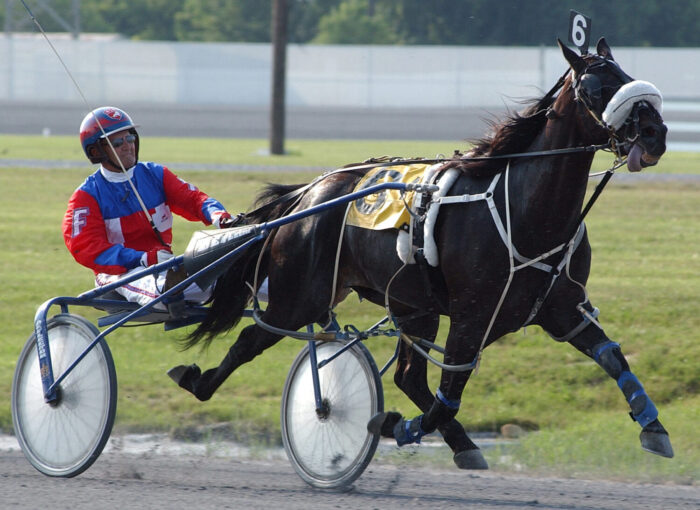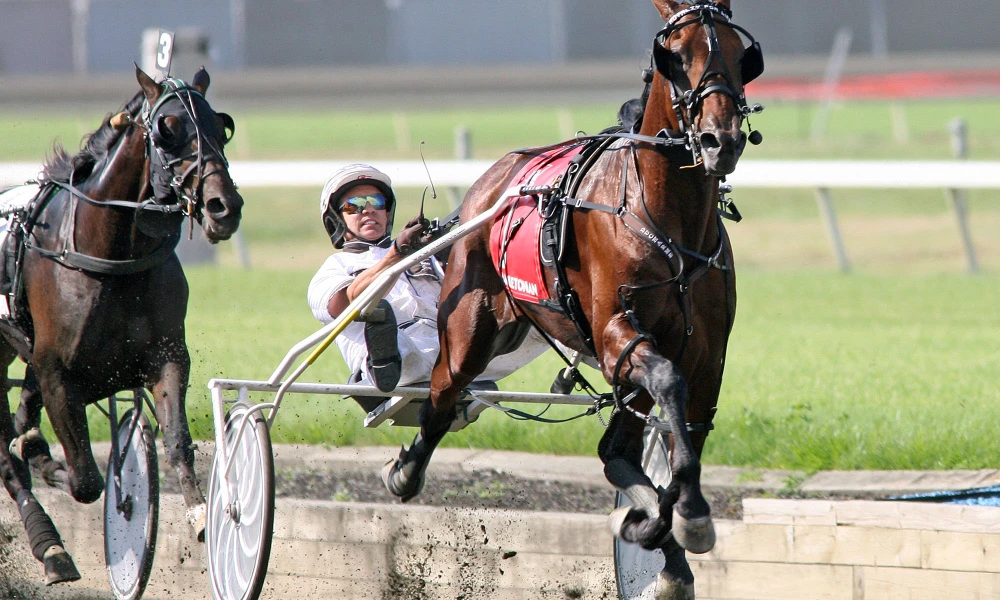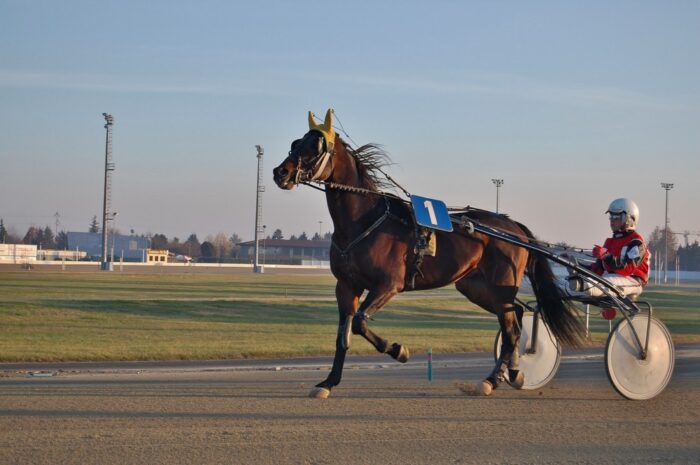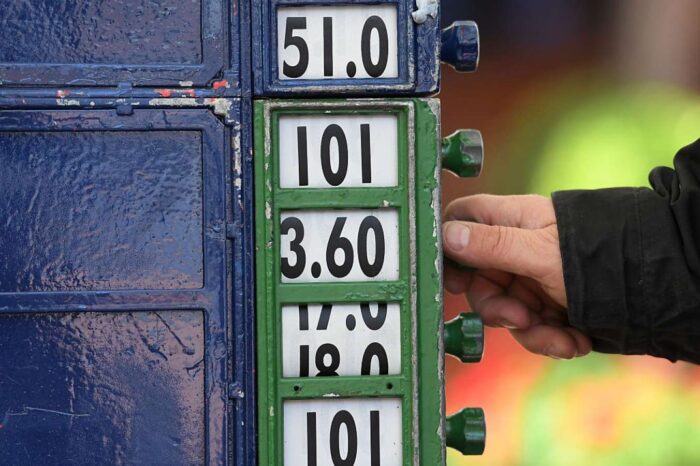It’s rare to find yourself bored in any sports circle. Even those who watch competitive board games like chess are at the edge of their seats from start to finish. However, you can’t deny that the novelty would wear off eventually after one too many times. Therefore, the sports industry threw in another element to the mix.
While players do their best to win, most of the audience monitors each second of the game to keep up with its progress. And that’s because they’ve invested their money by participating in sports betting. Although everything’s in good fun, there are high stakes already in place, considering you put money into this.
So, with your money on the line, any sports setting can get interesting. With this in mind, you can probably imagine how intense racing events are already. The thrill of anticipating which participants will win is enough to get your blood pumping. What more if there are well-trained animals in the scene, particularly horses?
What Is Harness Racing?

Source: timeschronicle.ca
It’s undeniable that horses are majestic beasts, especially when they’re in their element. Running is already in their nature, that’s why they fit in races like a glove. However, harness racing is miles away from what horse racing is. Because compared to horse racing commonly found on betting sites like www.punters.com.au, the rider won’t be on their horse to ride them to the finish line. Instead, they’re on a vehicle called a sulky or ‘spider’ tied to the horse.
Visually, the setup has a close resemblance to what you see from chariots. But in this case, the horse has to wear a harness from start to finish. Along with a harness, the horse also wears a crupper, saddle, girth, etc. And to top it all off, the horse has to wear a head pole to keep it from moving its head and neck around.
Since the sulky functions using only two wheels, the driver must be well-versed in operating it. Considering how they have to sit close to the horse from behind, they’re expected to be the horse’s extra pair of legs to maintain equilibrium by balancing their legs on the sulky’s shafts. That’s why drivers are often seated behind the horse leaning back with their legs spread out for optimal speed.
With the basics out of the way, it’s best to dive right into what makes harness racing much more different from horse racing.
1. Trotting And Pacing

Source: usatoday.com
Besides the sulky, what makes harness racing stand out is the gait the horses have to adhere to. In this situation, horses are expected to set a specific pace from start to finish. And these gaits are pace and trot.
Pacing has the horse running with the same side of its legs simultaneously. Therefore, if the horse’s right front leg touches the ground, its right hind leg should do the same. And vice versa. Because of this, pacing tends to be the faster gait of the two. And it helps that pacer horses are fitted with hobbles connecting the front and hind legs from each side. Although, some horse breeds are discovered to be a natural at these gaits, particularly Standardbred.
Meanwhile, horses trot by having their legs cross once they hit the ground simultaneously. So, once their right front leg touches the ground, their left hind leg should do the same. Considering how complicated it is, trots often go a little slower than pacing.
But regardless of how complicated they are, riders are meant to have their horses undergo rigorous training so they can maintain their gate throughout the race. Otherwise, they’ll commit what’s called ‘breaking stride.’ By failing to control their gait from start to finish, riders have no choice but to ‘lose ground’ on their progress or get disqualified.
2. Types Of Wagers

Source: visigon.com
Wagers are the core of sports like this. After all, why else would riders train their horses to perfect their gaits if not for a prize? However, if you have experience betting in horse race events, you might find harness racing wagers familiar because there are two types of wagers in horse races: straight and exotic bets.
Straight bets are fairly straightforward since it only involves a single horse in a single race. All you have to care about here is how well your chosen pacer or trotter would do against everybody else in the field. To go into more detail, there are different ways to bet straight: win, place, and show bets.
Due to its simple rule, win bets are the most popular wager to make since all you need is to select a horse and bet on it to finish the race first. If you want to increase your chances, place and show bets would be perfect for you since you can choose horses that won from first to third places. The only downside is how the latter two have fewer rewards than win bets.
On the other hand, exotic wagers are far more complicated, considering this involves multiple horses. Although this boosts your chances tenfold compared to place and show bets, you have to be loaded with cash to wager on those many horses. But just like with straight bets, you also have options to choose from, namely exacta, quinella, trifecta, superfecta, and pentafecta.
Exacta bets have you starting by picking two horses. Whichever reaches the finish line first has bigger rewards. Quinella bets are somewhat similar since there are two horses involved, but you can disregard the order of how they finished. Trifecta bets require you to pick three horses this time, superfecta has four, and pentafecta has five.
If those aren’t enough, you can even make bets over multiple races as seen from Daily Double and Pick 3, Pick 4, Pick 5, etc. Daily Double bets have you picking winners from two separate races in a row. At the same time, the second type of bet allows you to choose as many winners from different races as the bet specifies.
3. Placing Bets

Source: racenet.com.au
Since discipline is a heavy requirement to win, harness racing isn’t as popular as horse racing. Because it’s not as simple as getting to the finish line first, having that much at stake means fewer bets are going in. So, if you want to join in the fun, you have to make your bets count.
Learning all about the lineup for a race is a no-brainer. Since you’re planning to put your money into it, you have to place it on someone worthy of it. Know the history behind the rider and horse. How did they perform in previous races? Is the rider competent? How about their trainer? Is the horse in good condition? This line of questions serves as a guide in placing your bets. All you have to do is a little digging before placing a solid bet.
Takeaway
If watching sports is already thrilling, sports betting pushes it to the next level. And considering how fascinating horses are, you might be pleased while watching how they perform at a race. But instead of having riders push their horses to the limits to get to the finish line faster, you’re probably interested in participating in something different. Harness racing is a good example of getting out of the typical horse racing scene.
